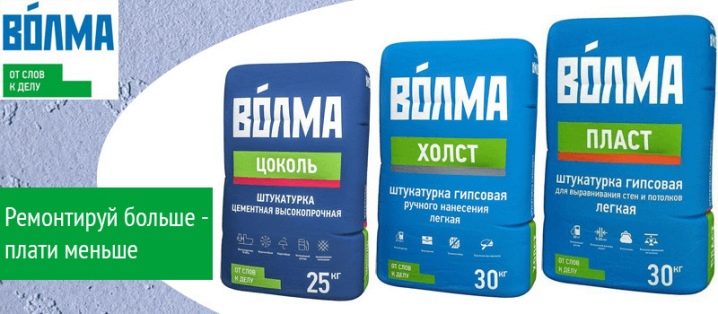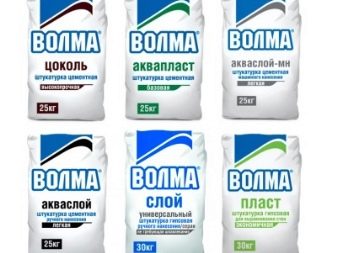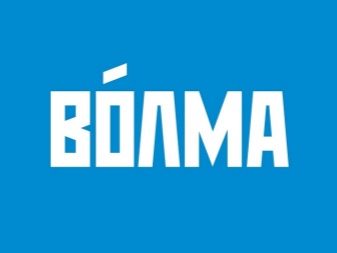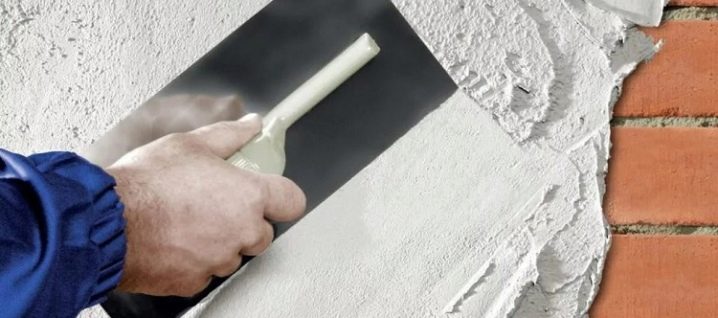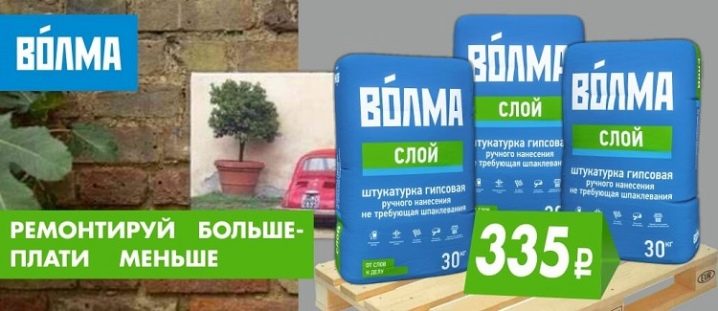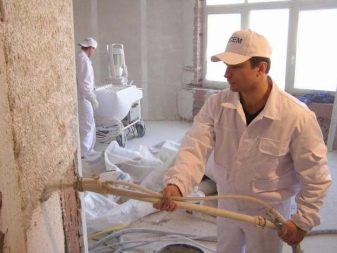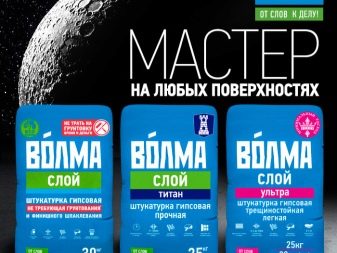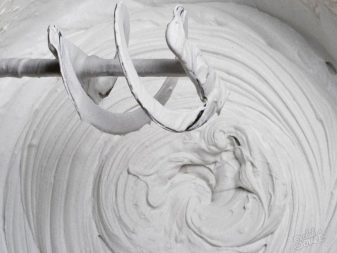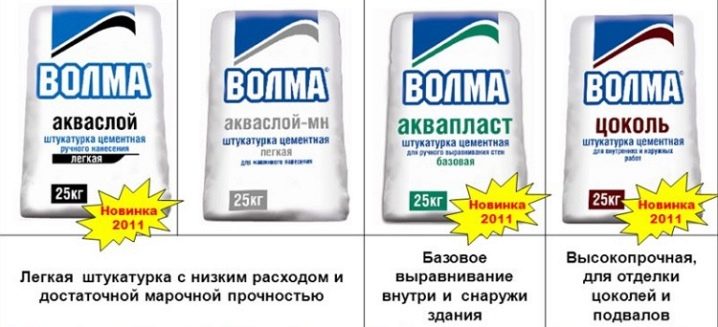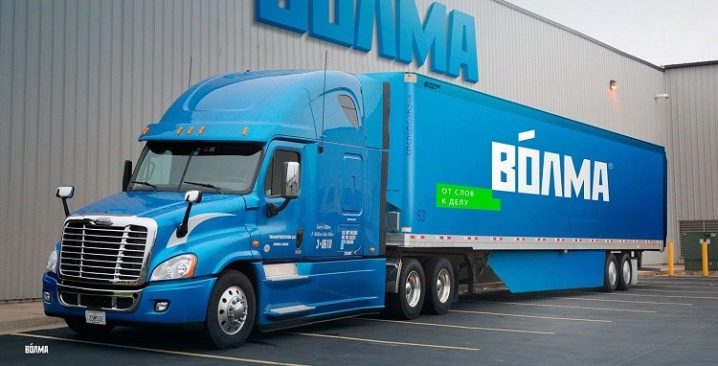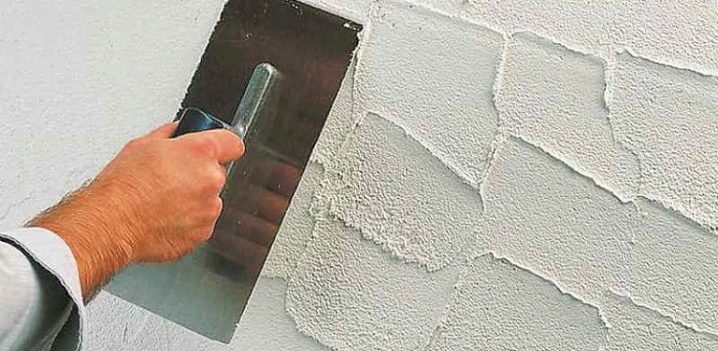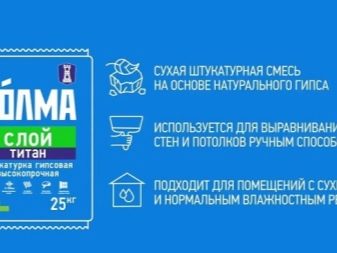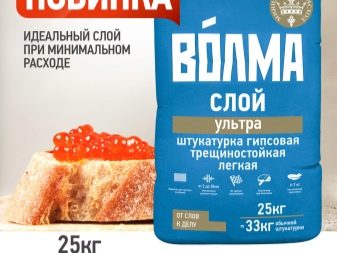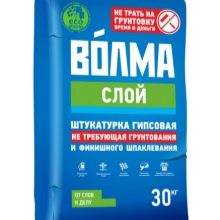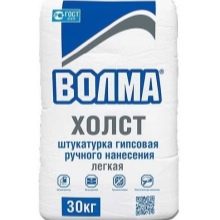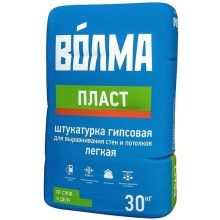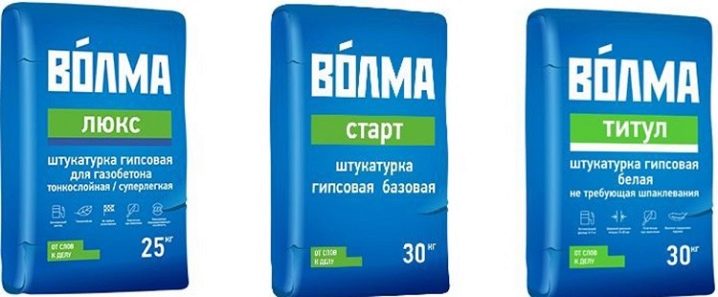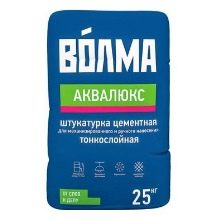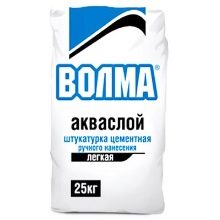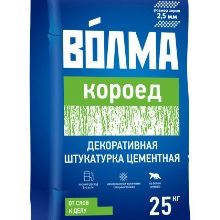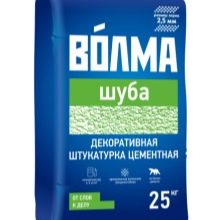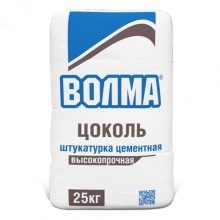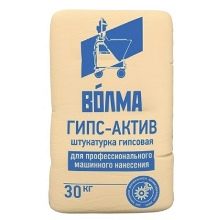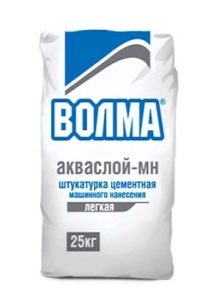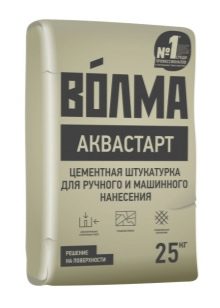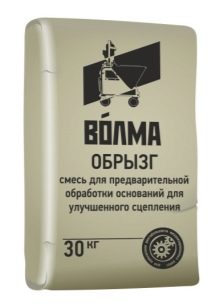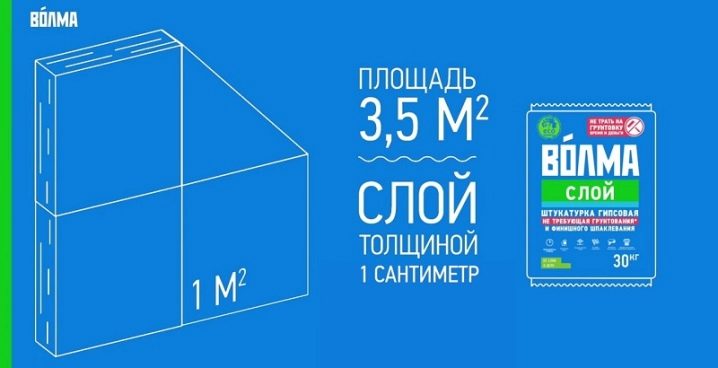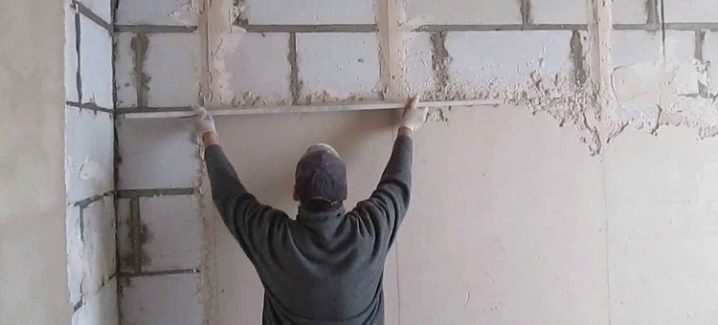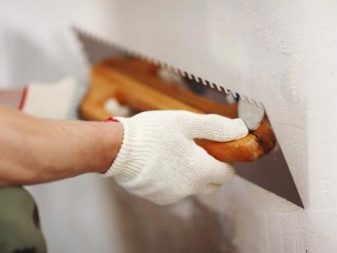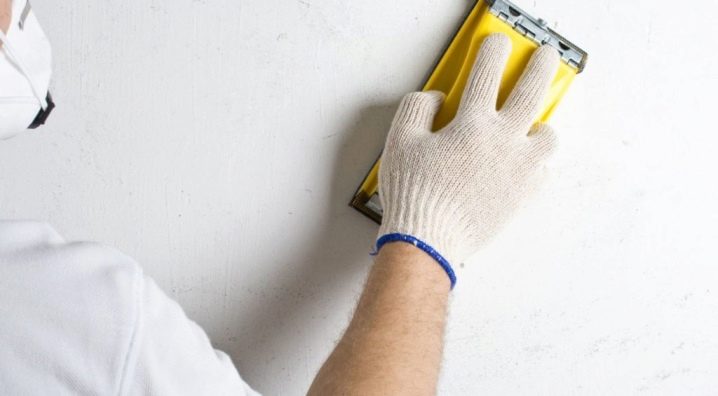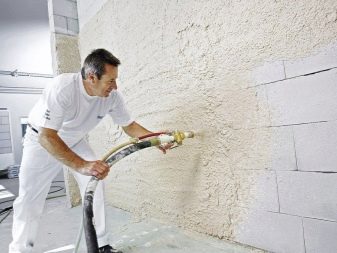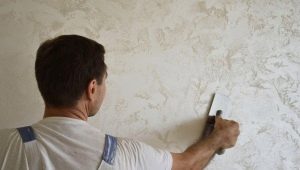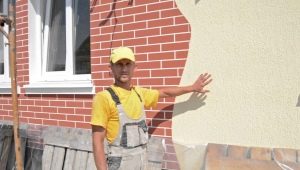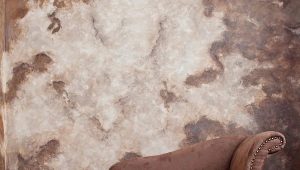Plaster "Volma": subtleties of use
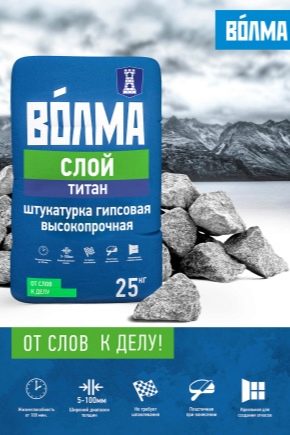
Volgograd plaster plant "Volma" is known on the domestic market for over 60 years. During this time, the company managed to take an active position in its segment, offering a large variety of building materials to the attention of buyers. Among the wide range of products are particularly popular plaster mixes.
Special features
The brand offers to the attention of buyers a wide range of plasters for any type of finish. Today, the linear series has more than 20 different types of material. Products is a dry formulation for dilution followed by application to the surface. Mixtures are sold in packs of 20, 25, 30 kg.
The products have a gradation, which indicates the type of work, the recommended thickness of the layer, the amount of water for breeding, as well as setting conditions.Depending on the basis of production, it has a different shade (white or gray).
Conditionally plaster mixtures can be divided into 2 types:
- gypsum;
- cement.
In addition to the basics, each material is supplemented with special additives that determine its purpose. For example, in the line there are varieties that do not require pre-priming, as well as compositions that are resistant to the formation of cracks during the drying process and further exploitation. Some formulations do not need filling, others are characterized by increased strength.
In addition, all the plaster mixes companies provide a different type of base. They differ in the methods of application. For convenience, this information is listed on the packaging of each dry mix.
The compositions can be applied manually or mechanized way. The second method reduces the period of application of the composition, allowing in a short time (about an hour) to cover them with all the required plane. Products are suitable for hopper buckets, as well as other tools for mechanical application and subsequent alignment.
There are basic and finishing plaster mixes in the line. They are distinguished by the size of the fraction, which is smaller in gypsum species.Due to this, the structure of products is softer and more pleasant in work.
Draft materials are compatible with finishing compositions of not only this brand, but also other companies..
Due to the dry powder type, the optimal packing volume, the long term "life" the composition can be used not only in small but also in large areas.
Specifications
The composition of materials is diverse. Varieties based on Portland cement are composed of lightweight fillers, mineral and polymeric inclusions. Due to this, it is possible to increase the operational properties of the plasters. The same can be said about the plaster modifications of the plasters of this brand. They are composed of light mineral additives.
It is worth noting the average physico-mechanical characteristics of products:
- recommended thickness - 0.5-3 cm;
- maximum layer thickness - 2-6 cm;
- full drying time - 5-7 days;
- water consumption - 0.28-0.3, 0.4-0.5, 0.55-0.65, 0.65-0.75 l / kg (depending on the type of plaster);
- t of the base is from + 5 ° to + 30 ° С;
- compressive strength - not less than 2 MPa;
- the beginning of the setting - 45-120 min;
- end of setting - 180-240 minutes;
- cycle time - 2-4 hours;
- vapor permeability resistance coefficient - 0.1-0.15 mg / mch Pa;
- shelf life - 1 year.
The amount of water you need to specify on the packaging of the goods. Its discrepancy may lead to deterioration of the quality characteristics of the material. Sometimes the manufacturer indicates the total water consumption per bag. For example, for dilution of the composition “Aqua Lux” with a volume of 25 kg, 4.5-5 liters of water are needed.
Advantages and disadvantages
Brand plaster mixes are unique. There are variations in the line for walls, floor and ceiling. If you need to choose the right material from the master will not have difficulties. All necessary information is indicated on the packaging.
In addition to the leveling properties, some materials are characterized by wide decorative possibilities. Among the main products in the collection of plaster mixtures "Volma" are finishing coatings with a special relief effect. Marble aggregate is added to their composition, microfiber reinforcement is present, and Portland cement has a white color. This allows, if necessary, to change the shade with regard to taste preferences.
Moisture resistant plaster is also included in the range. This material is indispensable for the decoration of apartments high-rise buildings with a high coefficient of humidity.There are shock-resistant varieties, as well as cement-sand blends for painting applied on mineral bases.
Stucco "Volma" has a number of advantages:
- Products are multifaceted. In the line there are materials for finishing surfaces inside and outside buildings.
- Mixtures are plastic.. They do not form cracks in the process of service during deformation or shrinkage of buildings.
- Environmental friendliness. There are no harmful impurities in the composition, so the products do not emit harmful toxins into the air and can be used in the home of allergy sufferers.
- Efficiency. Due to the powder form in the process, the master can accurately select the required amount of the mixture, which eliminates excess solution.
- Convenience store. Dry mix can stand for up to 12 months after opening. At the same time, the material properties will not change.
- The compositions are varied. The buyer can choose modifications for finishing rooms with a high degree of humidity. Also in the range there are options for different types of bases.
- High quality blends. With proper application and optimum climate conditions, they have a long service life.
- Coatings are almost non-shrinking.. This provides a better application than other brands.
- Materials have good throughput.. Fencing structures will not be destroyed, will be able to "breathe."
- Easy application. Plaster mixes do not stick to the spatula and the rule, so it is easy to level the surface.
- Mixes fit different types of finishes.. The treated surfaces can be covered with wallpaper, paint, other finishes (for example, stucco or bas-reliefs).
- Some formulations after drying, they acquire a characteristic glossy shine. This eliminates the need for finishing putty.
However, with a lot of advantages, these mixtures also have disadvantages:
- Strict appointment. Compounds cannot be replaced by others due to different requirements and operating conditions.
- Most of the compositions need preliminary preparation of the basis for improving the quality and performance.
- Gypsum varieties are not intended for high humidity environments. The structure will absorb moisture, which over time will lead to peeling of the plaster from the base.
- Compounds should not be stored in rooms with a high degree of humidity and in the cold. If the floor is cold, the bag is placed on a wooden stand.
- The term "life" of the compositions is limited. It is necessary to work with a ready solution without delay and frequent breaks. Otherwise, it will not be possible to avoid visible joints, which is unacceptable when applying a decorative mixture.
- Not every type of plaster material a company can withstand a temperature drop. This should be considered before buying a mixture.
Kinds
To date, in the line of plaster compositions of the brand there are different options for exterior and interior works:
- "Layer New". New on the basis of gypsum for the final coating of the planes. Does not need preliminary priming of the plane. Weight to align the walls and ceiling manually.
- "Layer Titan." Analogue with high adhesion and water holding capacity. Suitable for walls and ceilings manually.
- "Layer Ultra." One of the new and light mixtures that does not need to be putty. Crack resistant mass based on gypsum.
- "Layer". Dry plaster mix for interior work, characterized by high adhesion to the surface.Designed for manual application.
- "Canvas" and "Gross". Gypsum materials weighing 30 kg, characterized by optimal operating time and good adhesion of the mass to the prepared surface.
- "Plast". Analogue for leveling walls and ceilings, featuring ease of gypsum texture. Supplemented with chemical additives to increase adhesion.
- "Lux". Plaster plaster material for aerated concrete. Differs in a thin layer of drawing.
- "Start". Base coating for finishing. Aligns the walls and ceilings inside the heated type.
- "Title". White perlite material on the basis of gypsum. It does not need filling due to the formation of a glossy surface.
- "Aqualux". Cement thin layer material with fractional quartz sand. Differs in a thin layer of drawing manually or mechanically.
- "Aquasloy". Cement based leveling plaster. It is supplemented with light fillers, including mineral additives.
- "Bark Beetle". New on the basis of white cement with marble chips for decorative coating of surfaces for the texture of wood eaten by beetles.
- "Fur coat". An analogue of white-colored bark beetle, featuring a large relief of the surface being trimmed. Designed for facades of buildings.
- "Cap". Plaster with leveling properties, characterized by high strength characteristics.
- “Gypsum-Active” and “Gypsum-Active-Extra”. Two mixtures for professional application by machine. Gypsum-based materials characterized by cracking resistance.
- "Aqua MN". Cement plaster for professional craftsmen weighing 25 kg.
- Akvastart and Cement-Active. Professional material for builders, providing manual and machine application.
- "Splashing." Material on cement-sand basis, calculated on preliminary preparation of mineral surfaces. Differs in the increased adhesion.
Consumption per 1 m²
Consumption of plaster material per 1 square. m cultivated area is different. This is due to the different thickness of the applied layer, as well as the purpose of the material. For example, with a large difference in height, the composition will leave more, while in different places the thickness of the layer will be different.
Usually the manufacturer recommends the recommended parameters on the product packaging.If you increase the critical performance, it will increase consumption and reduce the quality and performance characteristics of mixtures.
The recommended consumption of plasters per square meter of the finished plane is:
- "Layer", "Layer Titan", "Title", "Gypsum-Active" - 8-9 kg;
- "Layer Ultra" - 6-8 kg;
- "Canvas", "Gross" - 9-10 kg;
- "Plast" - 10 kg;
- "Lux" - 6-7 kg;
- "Start" - 12 kg;
- "Aqualux" - 15-17 kg;
- "Aquasloy", "Aquasloy MN" - 11-12 kg;
- "Bark" - 3-4 kg;
- "Fur coat" - 4-5 kg;
- "Cap" - 14-15 kg;
- "Aquaplast" - 16-18 kg;
- "Gypsum-Active-Extra" - 7.5-8.5 kg;
- "Akvastart" - 14-16 kg;
- Cement-Active - 12-14 kg;
- "Splashing" - 1.6-1.8 tog.
Application Tips and Reviews
Rules for the use of plaster compositions brand no different from the generally accepted instructions for use. Regardless of the method (manual or machine), first prepare the base. If necessary, remove the old coating and everything that exfoliates from the walls (floor, ceiling).
Then you can build on the description of the technology:
- After removing the old coating, the surface is wiped with a semi-dry cloth or sponge, removing dust.
- The base (walls, ceiling or floor) must be primed to give it a uniform structure.It is better to use a deep penetration primer that binds dust particles and microcracks.
- After the primer has dried, the base is leveled using the basic compositions of the company. Use conventional or professional composition for mechanized application.
- After the mass is distributed over the surface, it is spread with a rule or a wide trowel.
- Then you need to wait. The base mix dries in different ways, it depends on the type of plaster. Approximate drying time can be found in the description of the mixture.
- After drying, the surface is polished with a special grater and ground again for better adhesion. The primer should be completely dry.
- Then a finishing material is applied to the surface. It is distributed in a thin layer. If it is a decorative material that is applied by hand, it is bred in parts to prevent the mass from drying out.
- When the surface dries out, it is trimmed with a scraper.
It is worth considering a few tips of the masters, based on their experience in working with plaster mixtures of this brand:
- Machine application allows you to speed up the workflow, but it is inappropriate for a small area of the treated surface.
- After applying a decorative coating for greater attractiveness it is worth aligning.
- When working with plaster, it is better to use plastic or silicone instead of wooden spatulas. To them, the mass will not stick.
- For decorating surfaces of walls or ceilings, it is better to use white compounds. They are compatible with colors of different shades.
- If the surface is prepared for the application of images of paintings or bas-reliefs, the thickness of the applied layers should be minimal.
- To create stucco use special equipment. Color bas-relief can be given before or after its application.
Some compositions based on gypsum after applying a decorative layer can be covered with a water-soluble varnish, diluting it by half. This increases the resistance of coatings to abrasion during the cleaning process.
In the next video you will find a master class on applying a plaster plaster Volma Layer.
